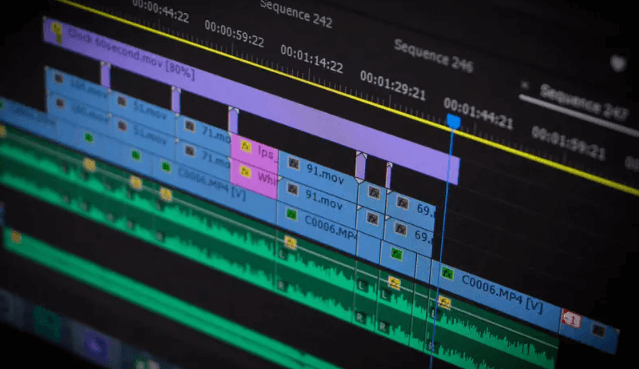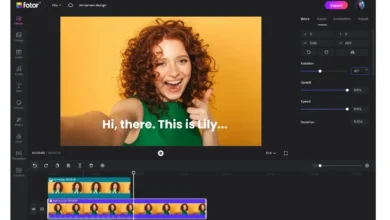10 Video Editing Trends You Need to Know for 2024

As we transition into 2024, the landscape of video editing is poised for significant transformation, driven by technological advancements and evolving audience preferences. Notably, trends such as AI-powered editing tools and the rise of vertical video are reshaping how content is created and consumed. Furthermore, the integration of augmented reality and real-time collaboration techniques is set to enhance storytelling capabilities. Understanding these emerging trends is essential for professionals aiming to remain competitive; the implications of these shifts may redefine your approach to video production in the coming year. What specific trends will prove most impactful?
AI-Powered Editing Tools
The emergence of AI-powered editing tools is revolutionizing the video production landscape, offering unprecedented efficiency and creativity for content creators.
With features like automated editing, intelligent suggestions, and voice recognition, these tools enhance workflow automation.
Advanced content analysis enables adaptive storytelling and predictive editing, while style transfer and emotion detection facilitate smart tagging.
This allows creators to craft compelling narratives that resonate with viewers on a deeper level.
Enhanced Visual Effects
As video editing continues to evolve, enhanced visual effects are emerging as a cornerstone of creative storytelling in 2024.
The integration of real-time visual effects and AI-powered editing tools is enabling filmmakers to craft immersive 3D experiences that captivate audiences like never before.
This trend not only streamlines the editing process but also expands the boundaries of artistic expression in visual media.
Real-Time Visual Effects
Real-time visual effects are revolutionizing the landscape of video editing, enabling creators to produce stunning visuals with unprecedented efficiency.
This cutting-edge technology fosters dynamic storytelling and spontaneous creativity, enhancing user-generated content.
AI-Powered Editing Tools
Harnessing the power of artificial intelligence, video editing tools are transforming the way visual effects are created and applied.
With AI algorithms driving automated editing and smart recommendations, users can enjoy intuitive interfaces and user customization.
Cloud-based solutions facilitate workflow automation, while adaptive learning and content analysis enhance predictive editing, empowering creators to produce captivating visuals with unprecedented efficiency and freedom.
Immersive 3D Experiences
With the rapid advancement of technology, immersive 3D experiences are redefining visual storytelling in video editing. By integrating virtual reality, spatial audio, and 3D animation, creators enhance user engagement and narrative depth.
Immersive storytelling now incorporates gamification elements and audience interactivity, fostering experience personalization through sensory design. This trend empowers audiences, allowing them to connect more deeply with content than ever before.
Vertical Video Dominance
As social media platforms continue to prioritize vertical video formats, creators must adapt their editing techniques to meet the demands of this shifting landscape.
The growing prevalence of mobile viewing underscores the need for content that captivates audiences in a portrait orientation.
Understanding platform-specific requirements will be crucial for producing engaging videos that resonate with viewers in 2024 and beyond.
Social Media Adaptation
Given the rapid evolution of social media platforms, vertical video has emerged as a dominant format, reshaping how content is created and consumed.
Brands must adapt their strategies to leverage social media algorithms that favor engaging vertical content, ultimately enhancing audience engagement.
Embracing this trend not only maximizes visibility but also empowers creators to connect authentically with their audiences in a visually dynamic landscape.
Mobile Viewing Experience
Although traditional video formats still hold value, the rise of mobile viewing has made vertical video the preferred choice for engaging audiences on handheld devices.
Screen optimization is essential to enhance this experience, ensuring content is visually compelling.
User-friendly interfaces further empower creators, allowing them to craft immersive narratives that resonate with audiences, ultimately promoting greater interaction and connectivity in our increasingly mobile-centric world.
Platform-Specific Formats
The dominance of vertical video formats has transformed the landscape of content creation, particularly across social media platforms.
To thrive in this shift, creators must embrace platform optimization strategies while addressing format compatibility challenges.
By tailoring content for vertical viewing, they can enhance engagement and reach.
This strategic approach empowers creators to harness the full potential of their videos in an ever-evolving digital ecosystem.
360-Degree Video Experiences
In an increasingly immersive digital landscape, 360-degree video experiences are emerging as a transformative medium for storytelling and engagement.
These dynamic narratives foster emotional connections through adaptive content that enhances audience engagement. By enabling viewer interactivity, they create personalized journeys and experiential learning opportunities, pushing the boundaries of immersive storytelling to achieve next-level immersion.
Embrace this trend to captivate and inspire your audience.
Real-Time Collaboration
Real-time collaboration is revolutionizing the video editing landscape by significantly enhancing workflow efficiency, enabling teams to work seamlessly across different locations.
This integration allows remote teams to participate actively in the editing process, fostering creativity and innovation.
As we move into 2024, the ability to collaborate in real-time will not only streamline production but also elevate the quality of the final product.
Enhanced Workflow Efficiency
Collaboration among creatives has reached new heights with the advent of enhanced workflow efficiency tools designed for video editing.
Streamlined processes and automation techniques facilitate project management, allowing for effective task prioritization.
Collaborative tools integrated with cloud storage enhance file organization, while time-saving workflows boost productivity.
Remote Team Integration
The rise of remote work has transformed how video editing teams operate, enabling seamless integration of talent across geographical boundaries.
Utilizing virtual collaboration tools and cloud-based storage, teams can engage in remote feedback sessions and online brainstorming sessions.
Effective team communication platforms facilitate video project management, while asynchronous editing workflows and robust digital asset management ensure that projects progress efficiently, regardless of location.
Advanced Color Grading
As filmmakers and content creators increasingly seek to differentiate their work in a saturated market, advanced color grading has emerged as a pivotal technique for enhancing visual storytelling.
Mastering color theory and leveraging cutting-edge grading software allows artists to employ creative techniques that manipulate lighting effects and mood setting, elevating film aesthetics and serving as a profound form of artistic expression in their narratives.
Mobile Video Editing
Harnessing the power of mobile technology, content creators are increasingly turning to mobile video editing as a viable solution for producing high-quality videos on the go.
Mobile editing apps offer user-friendly interfaces, enhanced touch screen functionalities, and video stabilization tools.
With smartphone accessibility and cloud storage solutions, creators can easily collaborate through cross-platform compatibility, while mobile editing tutorials and social sharing features keep pace with evolving content creation trends.
Interactive Video Content
With the rise of mobile video editing, creators are now exploring innovative ways to enhance viewer engagement, leading to a surge in interactive video content.
This trend embraces interactive storytelling, fostering audience participation through user-generated content and gamified experiences.
Sustainable Editing Practices
An increasing number of video editors are prioritizing sustainable editing practices to minimize their environmental impact and promote eco-friendly production methods.
Utilizing eco-friendly software and energy-efficient hardware, professionals are adopting minimal waste strategies and engaging in carbon offset initiatives.
This shift towards sustainable content creation not only supports green production practices but also fosters ethical storytelling techniques and enhances environmental awareness campaigns, empowering creators to make a difference.
Personalization and Targeting
As video production increasingly embraces sustainable practices, the industry is also witnessing a shift toward personalization and targeting in content creation.
With advanced audience segmentation, creators can tailor dynamic content that resonates with specific viewer interests. This strategic approach not only enhances engagement but also empowers brands to foster deeper connections with their audiences, ultimately driving loyalty and increasing conversion rates in 2024.
Conclusion
As the horizon of video editing approaches 2024, these emerging trends illuminate the path forward, akin to vibrant brushstrokes on a blank canvas. AI-powered tools and enhanced visual effects transform mundane footage into captivating narratives, while vertical videos and interactive content engage audiences in dynamic ways. The rise of sustainable practices mirrors a growing awareness of environmental responsibility, ensuring that creativity flourishes within a framework of ethical innovation. Embracing these trends will empower creators to craft compelling stories that resonate deeply with viewers.





